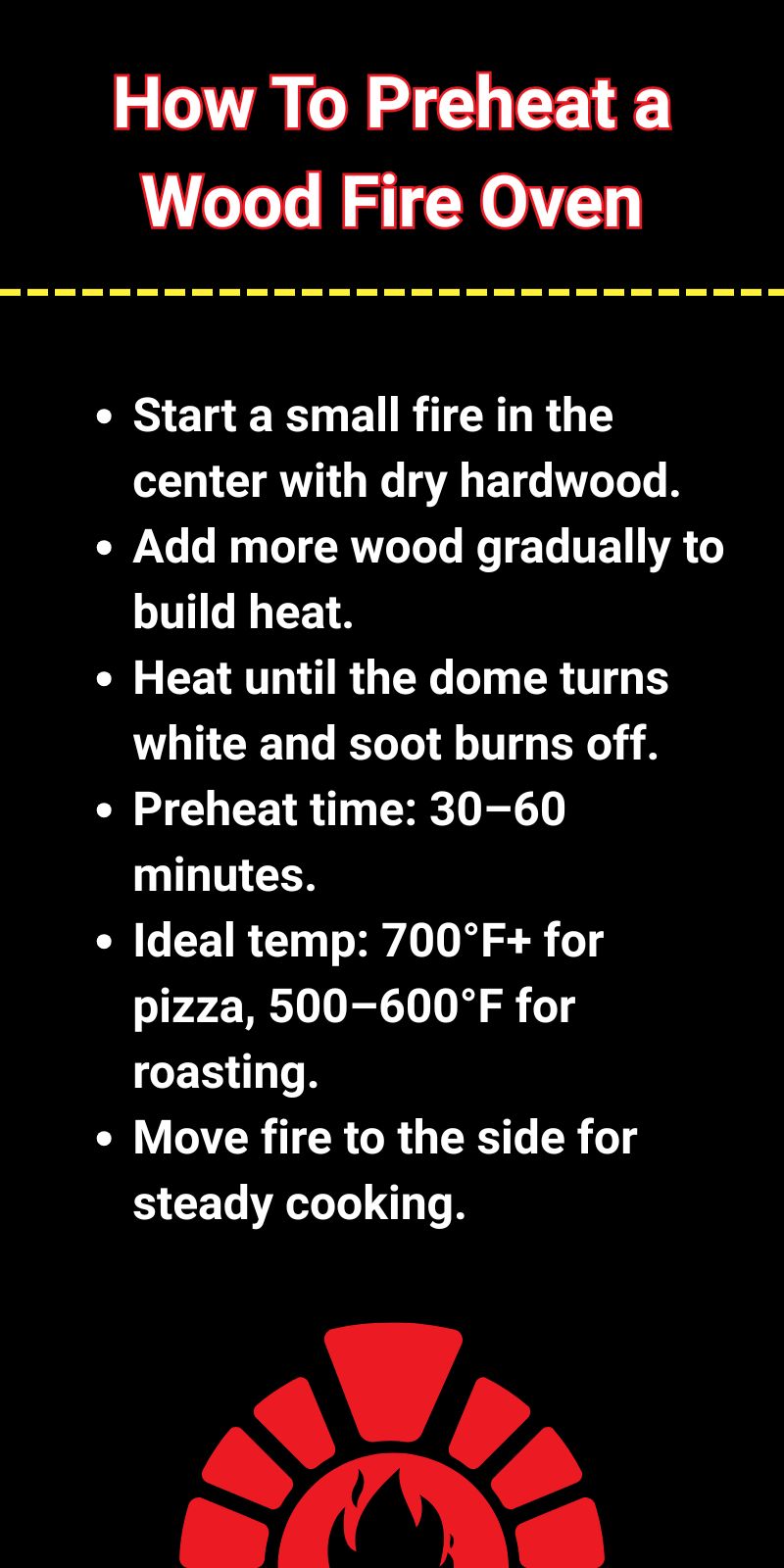Cooking with a wood fire oven is more than just a way to make pizza, it’s an experience. From the aroma of burning hardwood to the rich, smoky flavor it imparts on food, this old-world cooking method brings depth and character that traditional appliances simply can’t match. At Big Ash Fireplaces & Stoves, we’ve helped countless homeowners in Holley and throughout Western New York embrace the charm and craftsmanship of wood-fired cooking. But to get consistent results and preserve the life of your oven, you’ll want to understand the basics before you fire it up.
If you’re interested in installing a wood fire oven or appliance, look not further than Big Ash. Contact us now to get started!
How Do I Preheat My Wood Fire Oven?
Unlike a conventional oven where you simply turn a dial and wait for a beep, preheating a wood fire oven requires hands-on attention and patience. You’re not just warming up a metal box, you’re building and managing a fire that will radiate heat evenly through thick masonry walls. This process is what makes wood fire ovens so effective, but it also takes time to master.
Start by building a small fire in the center of the oven using dry kindling and hardwood splits. Once the fire catches, gradually feed it with more wood to increase the heat. It’s important to keep the fire centered at first so that heat distributes evenly across the oven dome and floor. The goal is to heat the thermal mass of the oven, not just the air inside it. Depending on the size and build of your oven, preheating can take anywhere from 30 minutes to over an hour.
You’ll know the oven is ready when the soot that initially blackens the interior walls has burned off, leaving the dome white and clean-looking. This is a good indicator that the internal temperature has risen to cooking range – typically 700°F or higher for pizza, and around 500–600°F for roasting or baking. At that point, you can either maintain the fire off to one side to keep consistent heat, or let it die down if you’re cooking something that needs a gentler temperature curve. It’s all about reading the fire, reading the oven, and adjusting your timing and placement to get the result you want.

What Type of Wood Should I Use for My Wood Fire Oven?
The wood you burn plays a huge role in how your oven performs. Not all firewood is created equal, especially when it comes to cooking. To get clean, even heat and rich flavor without overwhelming smoke or soot, we recommend the following:
- Seasoned hardwood only. Always use wood that has been properly seasoned – or dried for at least six to 12 months. Green or damp wood will smoke excessively and contribute to creosote buildup inside the oven.
- Oak. A favorite for its steady, long-lasting burn and clean heat. Oak delivers a mild smokiness that pairs well with everything from bread to roasted meats.
- Maple. Another great hardwood that burns hot and clean, with a slightly sweeter aroma that enhances baked goods and vegetables.
- Cherry or apple. These fruitwoods burn well and offer a pleasant, aromatic smoke ideal for poultry, pork, and desserts.
- Avoid softwoods like pine or spruce. These burn fast and produce more creosote, soot, and unpleasant resinous smoke. They’re better left for kindling – if used at all.
Keeping your firewood dry and well-ventilated is just as important as selecting the right species. Store your wood off the ground and under cover to ensure optimal burning when it’s time to cook.
How Do I Clean & Maintain My Wood Fire Oven After Cooking?
Once the cooking is done and the fire has died down, you’ll want to clean the oven to keep it performing at its best and preserve its lifespan. Regular maintenance also helps keep your food tasting pure and prevents buildup that can impact airflow and efficiency.
Here are some best practices for cleaning and maintaining your wood fire oven:
- Let the oven cool completely. Wait until the interior is warm but no longer hot before attempting any cleaning. This prevents ash from becoming airborne and makes cleanup easier.
- Sweep out the ash. Use a metal oven rake or brush to pull leftover ash and embers toward the opening. Scoop them out using a metal ash pan or shovel.
- Wipe the cooking surface. Once the oven is cool and the ash is removed, you can gently wipe the cooking floor with a damp cloth or specialty oven mop to remove fine debris.
- Avoid using water directly inside the oven. Introducing water to the interior can cause thermal shock and damage the masonry. Always use minimal moisture and make sure the oven is fully dry before lighting another fire.
- Inspect it regularly. Check for cracks in the masonry, buildup in the flue, or damage to the door or chimney components. Addressing small issues early can help you avoid costly repairs later.
- Cover your oven when not in use. If your oven is outdoors, use a weatherproof cover when it’s not in use. This protects the structure from rain, snow, and moisture damage – especially important in a climate like ours in Western New York.
Bring Wood-Fired Flavor Home With Help From Big Ash
There’s something timeless and satisfying about building a fire, preparing your ingredients, and working with the natural heat of stone and flame. Big Ash Fireplaces & Stoves is passionate about helping homeowners in Holley and the surrounding area bring that experience home. Whether you’re looking for a custom-built outdoor oven or need help maintaining the one you already own, we’ve got the knowledge and tools to keep the fire going. Stop by our showroom or give us a call to learn more about our wood-fired cooking systems and accessories!

Recent Comments